DATA SOURCE(S): 8,10,17,20,35,36,40
Common Name(s): Boxwood, European boxwood, common box
Scientific Name: Buxus sempervirens
Distribution: Europe, northwest Africa, and southwest Asia
Tree Size: 10-25 ft (3-8 m) tall,
4-6 in (12-20 cm) trunk diameter
Average Dried Weight: 60.2 lbs/ft3 (965 kg/m3)
Specific Gravity (Basic, 12% MC): .80, .96
Janka Hardness: 2,940 lbf (13,080 N)
Modulus of Rupture: 19,800 lbf/in2 (136.5 MPa)
Elastic Modulus: 1,779,000 lbf/in2 (12.27 GPa)
Crushing Strength: 10,334 lbf/in2 (71.3 MPa)
Shrinkage: Radial: 7.3%, Tangential: 11.2%,
Volumetric: 19.0%, T/R Ratio: 1.5
Color/Appearance: Color tends to be a light cream to yellow, which tends to darken slightly with prolonged exposure to light. Sapwood not distinct from heartwood.
Grain/Texture: Boxwood has a very fine, even texture with a natural luster. The grain tends to be straight or slightly irregular.
Rot Resistance: Heartwood is rated as durable, though it can become stained with dark streaks due to fungal attack. Mixed reports on susceptibility to insect attack.
Workability: Boxwood tends to be somewhat difficult to work in flat dimensions, though it is superbly suited for turning and carving, where it can hold very fine details. Tearout can occur on pieces with irregular grain during planing and other machining operations. Boxwood has a slight blunting effect on cutters.
Odor: No characteristic odor.
Allergies/Toxicity: Although severe reactions are quite uncommon, boxwood has been reported as a sensitizer. Usually most common reactions simply include eye, skin, and respiratory irritation. See the articles Wood Allergies and Toxicity and Wood Dust Safety for more information.
Pricing/Availability: Usually only available in small quantities and sizes, boxwood tends to be very expensive.
Sustainability: This wood species is not listed in the CITES Appendices, and is reported by the IUCN as being a species of least concern.
Common Uses: Boxwood is well-suited for carving and turning, though the tree’s diminutive size restricts it to smaller projects. Some common uses for boxwood include carvings, chess pieces, musical instruments (flutes, recorders, woodwinds, etc.), rulers, handles, turned objects, and other small specialty items.
Comments: It’s a shame that the term ‘boxwood’ has become so convoluted and confused in modern times, as there seems to be one particular wood species that has historically been associated with the name boxwood: Buxus sempervirens. It is this species that can be considered the original, genuine boxwood.
Boxwood’s ability to hold crisp details in carvings and lathe work, in combination with its uniform color and silky-fine texture truly make it a classic.
Other species in different genera tend to have similar appearances and working characteristics, (i.e., fine texture, hard, and heavy), and perhaps get marketed under the boxwood name, much like many woods are called by the mahogany name.
Images: Drag the slider up/down to toggle between raw and finished wood.
A special thanks to Steve Earis for providing a wood sample and turned photo of this wood species.
Identification: See the article on Hardwood Anatomy for definitions of endgrain features.
Porosity: diffuse porous; growth rings usually visible from latewood zones having slightly darker fibers and a slightly lower frequency of pores
Arrangement: exclusively solitary
Vessels: small, very numerous
Parenchyma: generally not visible, even with magnification, though sometimes diffuse-in-aggregates parenchyma is present
Rays: narrow, normal spacing; rays not visible without magnification
Lookalikes/Substitutes: While true boxwood is restricted to the Buxus genus (which itself consists of about 100 different species), there are a handful of boxwood-like woods which are botanically unrelated, but nonetheless share many of the characteristics of true boxwood (e.g., high density, yellowish heartwood, and very small diffuse pores giving a fine even texture). Standouts include: Knysna boxwood (Gonioma kamassi), Maraicabo boxwood (Gossypiospermum praecox), San Domingo boxwood (Phyllostylon brasiliensis), and Castelo Boxwood (Calycophyllum multiflorum).
Notes: Heartwood of boxwood does not fluoresce under blacklight, while some—but not all—of the other substitute species’ heartwood may give a positive fluorescent response.
Related Content:

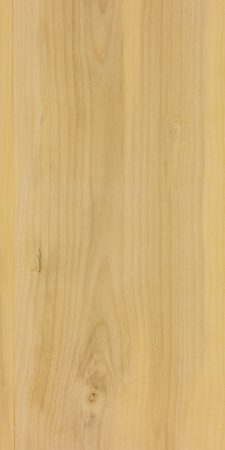
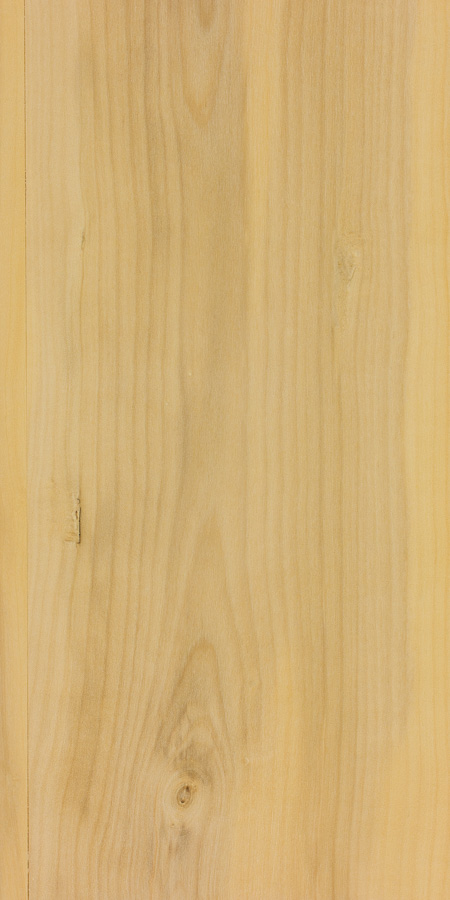
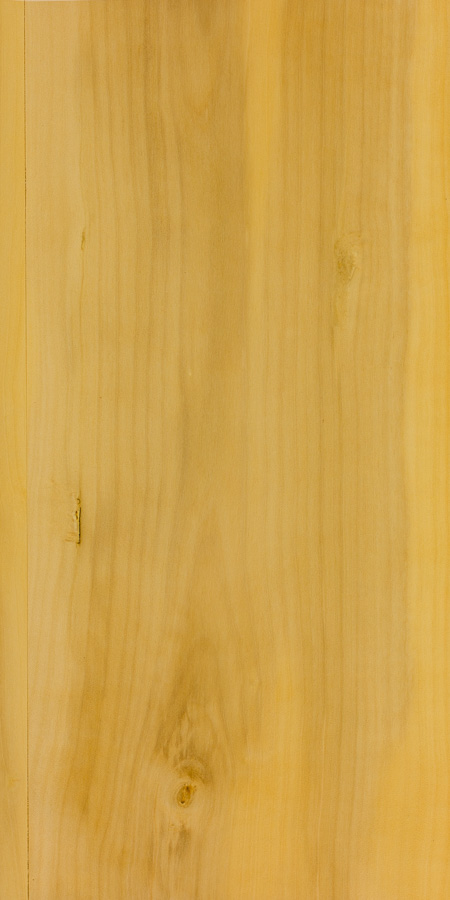
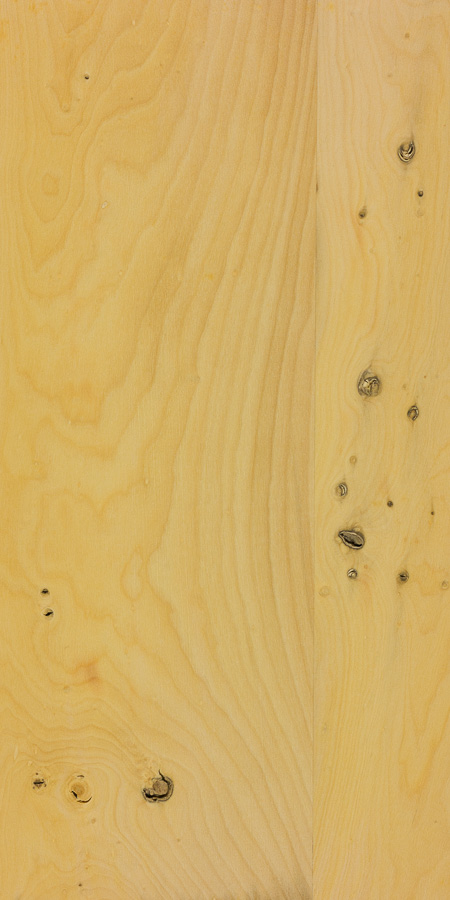
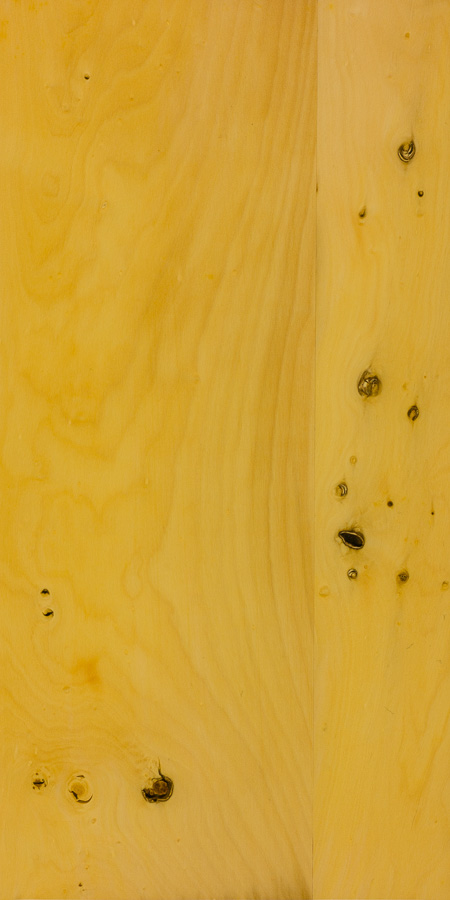
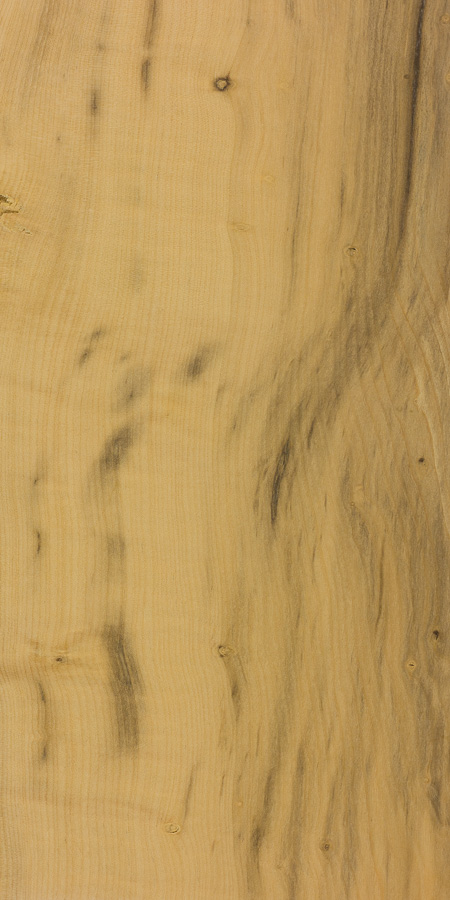
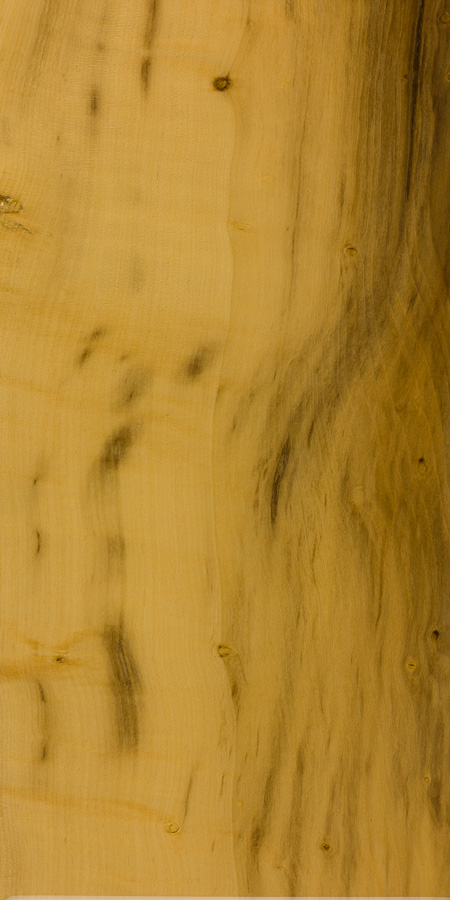
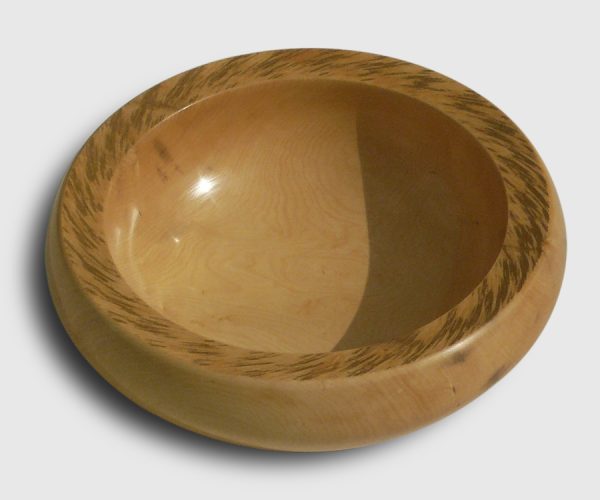
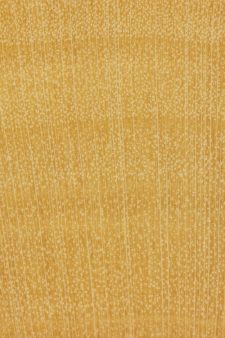

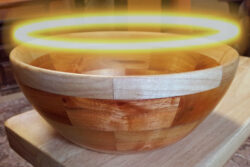


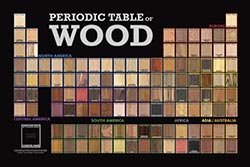



Following the box trees killed by the box moth about 4 years ago in France, I had several good-sized, dead trees I kept for later use. I just finished a guitar fretboard made out of a single piece of boxwood and that turned very well and is a pleasure to play. Not the easiest wood to work with but worth the effort.
Boxwood (Buxus sempervirens) is a really great wood, if you have a sharp knife you can actually not use sandpaper (as was often done hundreds of years ago in Europe). The largest trunks of Buxus sempervirens are in the French Pyrenees, Turkey and in England (favorable climate). Boxwoods often reach great sizes because they are long-lived, the problem is that they grow extremely slowly. Often wood grains are 0.5 mm thick! There is another species of true boxwood (Buxus) that grows to a considerable size – this is Buxus colchica. It grows in the Caucasus and local carpenters even make… Read more »
Can any of the buxus be heavy enough to sink like a stone ?
This stays on the bottom of the water tub so it is heavier than 63 yet this site says 61 for the buxus [boxwood] species available. I think it looks like it. What do you think ?
Hard to ID from the pics, but density is very commonly varied by plus or minus 10% of average, so possibly still within acceptable range.
I carved a little figure from true boxwood and it sank in water
One of the characteristics of wood that is not often mentioned is resistance to abrasion. A traditional croquet mallet has a hickory shaft, and a D shaped head of European boxwood (often referred to as English Box). Generally 250-300mm long and about 125mm across, the head is often turned out of a single piece of box, often a branch or small trunk, The striking ends are grooved and fitted with copper bands (the heartwood is usually centered on the striking faces). Think of it as a piece of branch turned into a cylinder with a piece sliced off the bottom.… Read more »
Hi! I love wood and I’ve been visiting this site for years now. In my opinion it is the best place to learn about wood in general on internet!!! Respect to Eric!!!
In my homeland Croatia’s Mediteranian parts (Dalmatia) boxwood is a very common species, and although most of it is shrubs and small sized trees, yesterday I saw a beautiful wild boxwood tree with trunk diameter of over 50cm!
Now I’m sorry that I didn’t take a picture of it to post it here but will do that in a separate comment on next occasion…
I was wrong, this is not Buxus. After more thorough research I realised this is Phillyrea latifolia from Oleaceae family, closely related to olive tree. Looks very much like boxwood. Sorry, my mistake!
You mentioned, “Other species in different genera tend to have similar appearances and working characteristics”. Can you name a few substitutes for boxwood?
Species in the calycophyllum genus comes to mind. https://www.wood-database.com/wood-finder/?fwp_genus=calycophyllum
Here, in France, the box trees have been decimated by the box moth and there are many good-sized, dead trees along the verges.
Is the wood damaged by the moth and how long can the dead tree stand before the timber ceases to have any value as a resource.
I’ve been reluctant to cut any down to test, as I’ve been told they can survive a couple of attacks. Most of the box in our region have been bare for two or three summers now.
The larvae of Cydalima perspectalis (box tree moth) mostly attack the foliage of Buxus species, but apparently can also damage the bark, which is more likely to permanently damage or kill the tree. More info here, and a project on which I work: https://www.cabi.org/ISC/datasheet/118433
Yeah but are there ANY areas where conservative logging would be ok? Boxwood siemerveins is Huey dense in Eastern Europe like Slovakia to Germany to Gorgia to Switzerland to Hungary and EVERYWHERE inbetween
To my surprise I noticed that in the south of France most larger box trees are now sprouting again from the trunk. I was sure this invasive moth had caused an ecological disaster and that boxwood would have permanently disappeared. But a miracle has happened! The moth has become part of the natural food chain and boxwood is establishing itself again.
I have made small boxwood massage tools and was wondering what would be the best finish to use? What do they use for a violin chin rest for example? Something that oesn’t irritate skin?
I wouldn’t be surprised if some makers leave the areas of high wear completely unfinished. I’m not sure what’s standard practice though…
I don’t know for chin rest but for woodwind instruments, we seal the wood with linseed oil. That would also allow you to wash your tools without damaging the wood.
I recently purchased buxus malowonii and found it identical — or near enough to be indistinguishable– from b. sempervirens. Something called Turkish boxwood was brought to my attention and I bought three samples. Two were either b.sempervirens or b.malwonii, and the third was something quite different from any buxus I have seen before. The photo goes with the comment on scoring planes with biowood, showing the surface on the rosewood burl from the previous comment.
Although tearout can be etreme when planing boards, due to dense, evershifting grain direction due to the compact, spindly growth of these tiny trunks over centuries, I find ascoring plane solves the problem. I am not sure of the correct Englush name for this plane which today is used mostly for prepping surfaces for gluing. In Spain, it is called cepillo de dientes, or plane of teeth literally. It’s the blade which has the teeth, being engraved with v profile lines down the back that result in triangular teeth on the cutting edge of the bevel. This approach removes the… Read more »
The English term is similar to the Spanish one. We call it a toothing plane, used primarily for surface prep for veneer work (as it adds ‘tooth’ for the glue to adhere to).
That’s an excellent idea, using it on difficult grain. How do you smooth the surface after? Scrape or sand?
Planing boxwood: “tearout” is an understatement, but if you plane across the grain even the most challengng areas can be smoothed successfully with a well sharpened and well adjusted plane.
use the cap iron / chipbreaker on woods like this. Planing across the grain can lead to edge chipout.
I was in north India some time back, and heard of whole forests of box [Buxus Sempervirens], with trees growing to considerable size – apparently, much better and more vigorously than in Europe or Turkey. May be worthwhile investigating.
Also, I was in East Africa, designing and manufacturing ox-drawn ploughs for local farmers. We used boxwood for the bearings of the plough’s nosewheel, because the wood is inherently slightly ‘greasy’, and the steel axle turned in it very easily, even when completely saturated with mud and dust.
indian boxwood is an other species, and not related to Buxus – https://www.flowersofindia.net/catalog/slides/Indian%20Boxwood.html
No. I was referring to a sub-species: Buxus Wallichiana spp., which grows at altitude [1200 to 3,000 metres] in the Himalaya. They form trees up to 15m tall and 2.2m girth.
These whole forests of box are purely fictional. They are called chikari trees and are already locally extinct inany places. The forests in the Himalayan regions are already extremely fragmented and under pressure from local as well as international demand for timber, medicines, minerals ( ‘Himalayan’ is a very good tag to add to any product!). Whatever few trees that are still surviving are better left alive as living creatures that have been a part of the ecosystem rather than be hacked, chopped and sold off to the other side of the world to be turned into silly trinkets of… Read more »
Here’s a butter knife handle I turned recently. I thought it was only fitting to use Boxwood for this project because it turns like the proverbial “frozen butter”!
Here’s a butter knife handle I turned recently. I thought it was only fitting to use Boxwood for this project because it turns like the proverbial “frozen butter”!